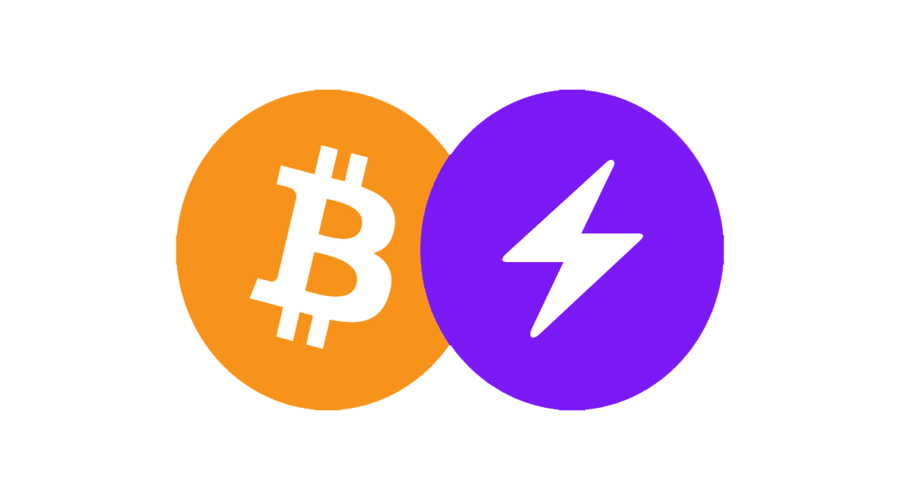
Lightning Network: Enabling Off-chain Transactions in Web
Introduction
In the world of cryptocurrencies, one of the biggest challenges has been scalability and speed. The limited transaction throughput and high fees associated with on-chain transactions have hindered the widespread adoption and practical use of cryptocurrencies like Bitcoin. However, a revolutionary solution known as the Lightning Network has emerged to address these limitations, enabling fast and cost-effective off-chain transactions. In this article, we will delve into the workings of the Lightning Network, its benefits, and its potential impact on the future of cryptocurrency transactions.
Understanding the Limitations of On-chain Transactions
Traditional blockchain networks, such as Bitcoin, process transactions on-chain. While this approach provides a secure and decentralized system, it comes with inherent limitations. The block size and block time constraints result in limited transaction throughput, often leading to congestion and delays. Moreover, as the network grows, the transaction fees associated with on-chain transactions tend to increase significantly.
What is the Lightning Network?
The Lightning Network is a second-layer protocol built on top of existing blockchain networks, primarily designed to address the scalability and speed issues of on-chain transactions. It introduces an off-chain payment channel network that enables instant and low-cost transactions, alleviating the burden on the main blockchain.
The Lightning Network is a groundbreaking second-layer protocol built on top of existing blockchain networks, primarily designed to address the scalability and speed limitations of on-chain transactions. It introduces an off-chain payment channel network that enables instant and low-cost transactions, revolutionizing the way cryptocurrencies are used.
Traditionally, blockchain networks, like Bitcoin, process transactions on-chain, which often results in limited transaction throughput and high fees. The Lightning Network solves this problem by establishing payment channels between participants. These channels allow users to transact directly with each other without the need for on-chain confirmations. By leveraging smart contracts and multi-signature wallets, the Lightning Network ensures the security and trustworthiness of off-chain transactions.
One of the key advantages of the Lightning Network is its ability to enhance scalability and speed. By conducting transactions off-chain, the Lightning Network significantly reduces the burden on the main blockchain, allowing for faster and more efficient transactions. This makes cryptocurrencies more practical for everyday use, enabling microtransactions and instant payments.
Furthermore, the Lightning Network reduces transaction costs associated with on-chain transactions. With low-cost off-chain transactions, users can enjoy affordable fees, making cryptocurrencies more accessible and viable for a wide range of use cases.
Privacy and security are also improved with the Lightning Network. Since most transactions occur off-chain, the network enhances privacy by reducing the visibility of individual transactions on the public blockchain. Additionally, the use of multi-signature wallets and smart contracts ensures the security and integrity of funds during off-chain transactions.
Overall, the Lightning Network represents a significant leap forward in solving the scalability and speed challenges faced by blockchain networks. With its fast, low-cost, and secure off-chain transactions, it opens up new possibilities for innovation and mainstream adoption of cryptocurrencies.
How Does the Lightning Network Work?
The Lightning Network operates through the establishment of payment channels between participants. These channels allow users to transact directly with each other without the need for on-chain confirmations. By leveraging smart contracts and multi-signature wallets, the Lightning Network ensures the security and trustworthiness of off-chain transactions.
The Lightning Network operates through the establishment of payment channels between participants, enabling fast and cost-effective off-chain transactions. When two participants want to transact with each other, they can open a payment channel by creating a multi-signature transaction on the underlying blockchain. This transaction serves as the foundation for their off-chain interactions.
Once the payment channel is open, participants can engage in an unlimited number of transactions without the need for on-chain confirmations. These off-chain transactions are represented by updating the balance sheet within the payment channel. Both participants have a copy of this balance sheet and can update it by signing new transactions that reflect the changing ownership of funds.
To ensure the security and trustworthiness of transactions, the Lightning Network utilizes smart contracts. These contracts define the rules and conditions under which funds can be spent or transferred within the payment channel. By leveraging multi-signature wallets, both participants must agree on the allocation of funds and sign the transactions for them to be valid.
When participants are ready to close the payment channel, they can do so by broadcasting the final state of the balance sheet to the underlying blockchain. This final state reflects the latest allocation of funds agreed upon by both parties. Closing the channel on-chain allows the participants to settle the net balance of their transactions and retrieve their respective funds.
In summary, the Lightning Network enables fast and efficient off-chain transactions by establishing payment channels and utilizing multi-signature wallets and smart contracts. It provides a scalable and cost-effective solution for overcoming the limitations of on-chain transactions, making cryptocurrencies more practical for everyday use.
Benefits of the Lightning Network
- Enhancing Scalability and Speed
The Lightning Network significantly enhances the scalability of blockchain networks by enabling a virtually unlimited number of transactions to occur off-chain. As a result, it relieves the burden on the main blockchain, allowing for faster and more efficient transactions.
- Reducing Transaction Costs
By conducting transactions off-chain, the Lightning Network eliminates the need for high transaction fees associated with on-chain transactions. Users can enjoy low-cost microtransactions, making cryptocurrencies more practical for everyday use.
- Improving Privacy and Security
Since most transactions occur off-chain, the Lightning Network enhances privacy by reducing the visibility of individual transactions on the public blockchain. Additionally, the use of multi-signature wallets and smart contracts ensures the security and integrity of funds during off-chain transactions.

Lightning Network Applications
The Lightning Network opens up a wide range of possibilities for various applications. Microtransactions, instant payments, and the Internet of Things (IoT) are just a few areas where the Lightning Network can revolutionize the way transactions occur. With its fast and low-cost nature, the Lightning Network enables new business models and use cases that were previously impractical or infeasible on traditional blockchain networks.
Lightning Network Adoption and Challenges
While the Lightning Network shows great promise, its adoption is still in its early stages. The need for sufficient network liquidity, user-friendly interfaces, and widespread awareness are some of the challenges that need to be addressed for broader adoption. However, as more developers and users recognize the benefits it offers, the Lightning Network is gradually gaining traction.
- Early stages of adoption: The Lightning Network is still in its early stages of adoption, with ongoing efforts to increase awareness and encourage participation.
- Network liquidity: Sufficient network liquidity is crucial for the effective functioning of the Lightning Network, ensuring the availability of funds for off-chain transactions.
- User-friendly interfaces: Improving user interfaces and creating intuitive wallets are important to make the Lightning Network accessible to a wider audience.
- Education and understanding: Educating users about the benefits and workings of the Lightning Network is essential for its adoption, as it introduces a new paradigm for conducting transactions.
- Interoperability: Enhancing interoperability between different implementations of the Lightning Network is necessary to create a seamless experience for users across various platforms and cryptocurrencies.
- Security considerations: As the Lightning Network handles off-chain transactions, ensuring the security and integrity of funds and protecting against potential vulnerabilities or attacks is a significant challenge.
- Scalability concerns: While the Lightning Network addresses scalability for individual transactions, scaling the network itself to handle a larger user base and increased transaction volume remains an ongoing challenge.
- Regulatory landscape: Navigating the regulatory landscape surrounding the Lightning Network and its implications for financial regulations and compliance poses challenges for wider adoption.
- Public awareness and trust: Building public trust and confidence in the Lightning Network requires transparent communication, successful use cases, and robust security practices.
- Ongoing development: Continued research, development, and collaboration are necessary to address current challenges and refine the Lightning Network, making it more efficient, user-friendly, and secure for widespread adoption.
Future Potential and Developments
The Lightning Network represents a significant step forward in solving the scalability and speed challenges faced by blockchain networks. With ongoing research and development, improvements are being made to enhance the network’s functionality, interoperability, and ease of use. As the Lightning Network continues to evolve, it has the potential to become the go-to solution for fast and cost-effective cryptocurrency transactions.
Conclusion
The Lightning Network has emerged as a groundbreaking solution that addresses the scalability and speed limitations of on-chain transactions. By enabling fast, low-cost, and private off-chain transactions, it revolutionizes the way cryptocurrencies are used and paves the way for mainstream adoption. As the Lightning Network continues to mature and overcome existing challenges, it holds immense potential to shape the future of decentralized finance.
FAQs
- Is the Lightning Network compatible with all cryptocurrencies? Yes, the Lightning Network is not limited to a specific cryptocurrency and can be implemented on various blockchain networks.
- Do I need technical expertise to use the Lightning Network? While technical understanding can be helpful, user-friendly interfaces and wallets are being developed to simplify the usage of the Lightning Network.
- What happens if a payment channel on the Lightning Network becomes unresponsive? The Lightning Network has mechanisms in place to handle unresponsive or malicious participants, ensuring the security of funds.
- Can the Lightning Network be used for large transactions? Although the Lightning Network is primarily designed for smaller transactions, it can handle larger transactions by routing them through multiple payment channels.
- Are off-chain transactions on the Lightning Network reversible? No, once an off-chain transaction is successfully completed, it becomes final and cannot be reversed, providing the same level of security as on-chain transactions.
I’m a professional writer. I have been writing about Cryptocurrencies for more than 2 years now and I consider myself one of the best authors in this field. I am very passionate about this technology and I believe that it will change the world as we know it. If you want to learn more about cryptocurrencies, you should definitely check out my work!


